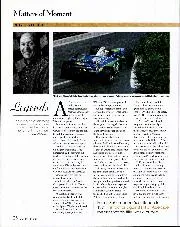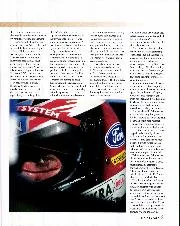

Michael Schumacher: Nigel Roebuck's Legends
As I write, two races in the 2006 F1 season remain, and Michael Schumacher, on the brink of retirement, is fighting for his eighth World Championship. As ever with Schumacher…
* * * Sir,
In recent diScussions with some of my friends on the matter of balancing of crankshafts a point has arisen which perhaps you might clarify. As we are aware, a car’s crankshaft, especially a racing engine’s, is balanced. both statically and dynamically. As I understand it, the shaft is mounted on knife edges (roughly speaking), the heavy side found, weight added diametrically opposite, or removed from the heavy side,
and when, after repeated spinning, it comes to rest in any position the shaft is in static balance. Correct ?
All well and good. Now the shaft is mounted in a rig and rotated at various revolutions and vibrations, if any, are noted. Why should there be any ? According to the laws of physics a weight of one ounce three inches from the centre of a wheel should exactly balance a diametrically opposite weight of two ounces one and a half inches from the centre.
Is it that the centrifugal force affects the lesser weight more so than the greater ? It doesn’t seem right.
Well, suppose vibrations do exist and weight is removed or added to cancel them out. Now the shaft will not be in static balance. I have consulted many volumes on design and there is a marked scarcity of information on the balance of anything,
either theoretical or practical. I will be much obliged for any information you can supply.
I have been reading your publication for several years and there is none better. Over in this part of the country such a thing as a motor-cycle road race, much less a car event, is regarded as practically criminal by many of the legal authorities and most of the public. In fact many of the former are all for the abolition of motor-cycles from the road. So you see, to a few enthusiasts like myself, your journal is awaited with much anticipation each month.
How about a road test of a 57S Bugatti ? I am, Yours etc., H. M. NERRIERE. 8455 Osier Street,
Vancouver, B.C. * * *